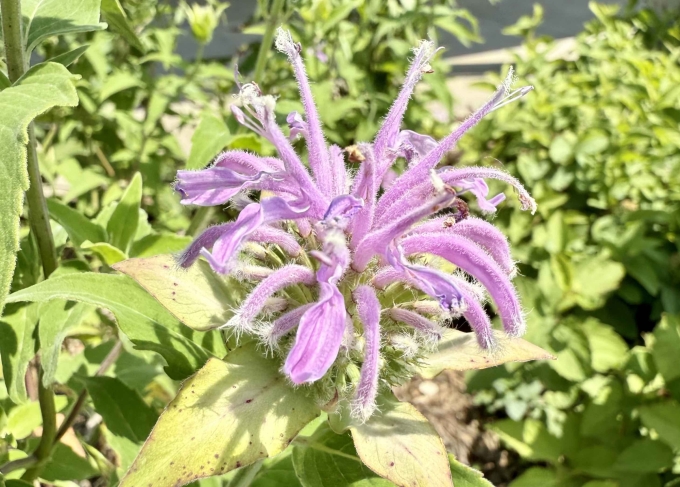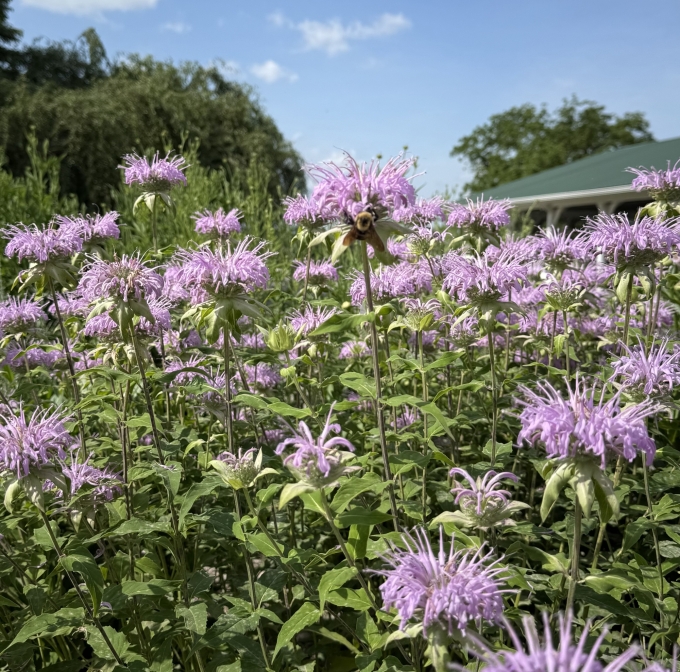Common Name: Wild Bergamot; Bee Balm
Family: Lamiaceae
Plant Type: Herbaceous Perennial
Hardiness Zones: 3–9
Height: 2.0 to 4.0 feet
Spread: 2.0 to 3.0 feet
Bloom Time: June to September
Bloom Description: Lavender to pink tubular flowers in dense, rounded clusters
Sun Exposure: Full sun to part shade
Water Needs: Dry to medium
Soil Preference: Well-drained soils; tolerates clay, loam, and sandy soils
Management Level: Low
Suggested Use: Pollinator gardens, native plantings, meadows, borders
Attracts: Bees, butterflies, hummingbirds
Tolerates: Drought, deer, poor soil
Notable Features: Fragrant foliage, high pollinator value, aromatic and medicinal uses
Native Range: Widespread across North America, including Nebraska and the central Great Plains.
Nebraska Growing Notes:
Thrives in prairie, savanna, and dry open woodland conditions across the state. Appreciates full sun but tolerates some shade. Highly attractive to native bees, especially long-tongued bumble bees. Fragrant foliage may help deter deer and rabbits.
Landscape Use:
Perfect for prairie restorations, pollinator strips, or low-input borders. Can be planted en masse or interspersed with grasses and other wildflowers for a naturalistic look.
Caution:
May be susceptible to powdery mildew, especially in humid or shaded conditions—plant with good air circulation and consider resistant cultivars if needed.
Garden Locations:
Bed(s) 4, 5, 8
Sources:
https://plants.usda.gov/plant-profile/MOFI
https://www.missouribotanicalgarden.org/PlantFinder/PlantFinderDetails.aspx?kempercode=g560



